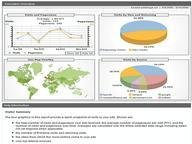Statistics Vocabulary
When will I ever use that school knowledge in real life? Statistics brings math into our real world with interpreting data and making wise decisions in our life. Given real world scenarios can you link up the matching statistics vocabulary? Average, 10 Qns, GBfan,
Jun 27 24
Recommended for grades: 10,11,12




 Quick Question
Quick Question = Top 5% Rated Quiz,
= Top 5% Rated Quiz,
 Top 10% Rated Quiz,
Top 10% Rated Quiz,
 A Well Rated Quiz
A Well Rated Quiz